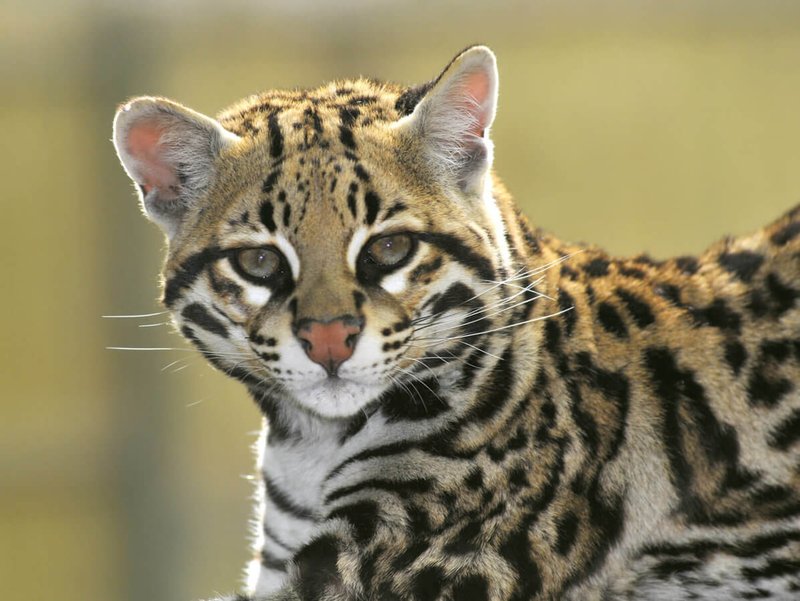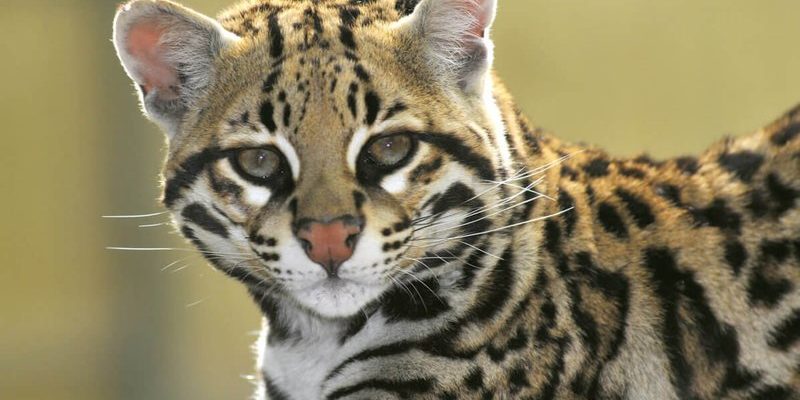
What makes ocelots so fascinating? Well, they have a mix of beauty and mystery that captivates wildlife enthusiasts and casual observers alike. Their stunning coat, which resembles a work of art, is just the beginning. So, grab a cup of coffee, and let’s dive into ten amazing facts about the ocelot that you might not know!
1. Ocelots Are Masters of Camouflage
One of the primary reasons ocelots thrive in their natural habitats is their incredible ability to blend in. Their fur is marked with a unique pattern of spots and stripes, almost like a natural disguise. This helps them hide from both their prey and potential predators. Imagine walking through a thick jungle and unexpectedly spotting a creature that looks just like the dappled sunlight filtering through the leaves.
When ocelots prowl through the underbrush, their beautiful coats help them remain unseen, making them effective hunters. They primarily feast on small mammals, birds, and reptiles. This natural camouflage is an evolutionary gift, allowing them to surprise their dinner without being detected.
2. They’re Nocturnal Hunters
You might be wondering when ocelots do all their hunting. Well, here’s the thing—they’re mostly active at night! Being nocturnal allows ocelots to take advantage of the cover of darkness, enhancing their stealth when hunting. They rely heavily on their keen sense of hearing and sight to navigate their environment.
During the nighttime hours, ocelots use their acute senses to listen for rustling leaves or chirping insects that signal potential meals. By moving silently through their territory, they can sneak up on unsuspecting prey. And if you’ve ever tried to catch your cat doing something sneaky, you know how effective a quiet approach can be!
3. They Have a Wide Range of Habitats
Ocelots are incredibly adaptable creatures. You can find them in various habitats, from tropical rainforests to coastal swamps and even dry scrublands. They thrive in dense vegetation, where they can find plenty of cover for hunting and resting.
Another fascinating aspect of their habitat preferences is that ocelots are often found near water, as they’re great swimmers! They don’t shy away from jumping into rivers or ponds to catch fish or other aquatic creatures. Imagine strolling through a lush jungle and suddenly spotting one of these agile cats gracefully leaping into the water, making a splash as it hunts.
4. They’re Not Just Solitary
It’s easy to assume that ocelots lead solitary lives like many other wild cats. While they do enjoy their alone time, ocelots are known to be somewhat social compared to other felines. They can form loose associations with other ocelots, especially during mating season.
These cats communicate through a series of vocalizations like growls, meows, and even purrs to express themselves to each other. In the wild, you might hear a chorus of sounds echoing through the trees as they signal their presence. Isn’t it amazing to think about a cat’s social life thriving in the heart of the jungle?
5. Ocelots Are Excellent Climbers
Ocelots are built for agility. Their strong legs and sharp claws make them fantastic climbers. They often take to the trees to hunt birds or escape from larger predators. Think of them as the acrobats of the jungle!
When they’re not hunting, ocelots use trees as vantage points to survey their surroundings. From high up in the branches, they can spot potential meals or notice any threats. It’s almost like they’re saying, “The higher I am, the better I can see!”
6. Their Patterns Are Unique
Just like fingerprints, no two ocelots have the same coat pattern. Each individual sports a unique combination of spots and markings. This variety not only makes them visually stunning but also plays a role in their identity among other ocelots.
Researchers often use these patterns to identify different ocelots in the wild. By studying them, scientists can learn about their behavior, movement, and population dynamics. It’s like a feline version of identity cards, helping keep track of these beautiful creatures.
7. They Have a Diverse Diet
Ocelots are opportunistic eaters, which means they’re not picky about what they consume. Their diet mainly consists of small mammals, rodents, birds, and even reptiles. They’re often found hunting in pairs or alone, depending on their needs.
Interestingly, ocelots will also adapt their eating habits based on their environment. In some regions, they’ve been known to feast on fish, while in others, they prefer small mammals like rabbits. This dietary flexibility helps them thrive in various habitats. Think of them as the “foodies” of the wild world!
8. Ocelots Are Endangered
Unfortunately, ocelots face numerous threats in the wild. Habitat loss due to deforestation, urbanization, and agriculture has significantly reduced their living spaces. Additionally, they are often hunted for their beautiful fur, further contributing to their decline.
Conservation efforts are underway to protect these amazing creatures. Various organizations work to preserve their natural habitats and raise awareness about their plight. It’s crucial to understand the importance of ocelots in their ecosystems; they help control the populations of smaller animals, maintaining balance within their food web.
9. They Have a Short Lifespan
In the wild, ocelots typically live up to 7–10 years, but in captivity, they can live longer—sometimes up to 20 years. This disparity is largely due to the absence of predators and access to regular food in a controlled environment.
Their short lifespan in the wild reflects the challenges they face daily, from finding food to avoiding danger. It’s a reminder of the harsh realities of life in the wild and underscores the need for conservation efforts to ensure they have a fighting chance for survival.
10. Ocelots Are a Symbol of the Wild
Ocelots aren’t just fascinating creatures; they also hold significant cultural and ecological importance. In many South American cultures, they symbolize strength and agility. They remind us of the beauty and complexity of wild ecosystems.
As you learn more about ocelots, think of them as representatives of the vast, intricate web of life that exists in our world. Protecting them means preserving the delicate balance of nature. When you hear about ocelots, think of all the adventures they experience, from climbing trees to navigating their territories.
In conclusion, ocelots are not just beautiful cats—they’re complex beings with unique habits and traits. Understanding their lives helps us appreciate the beauty of nature while also emphasizing the importance of conservation. So, the next time you hear a story about ocelots, you can share these fascinating facts and inspire others to care about these incredible animals!

